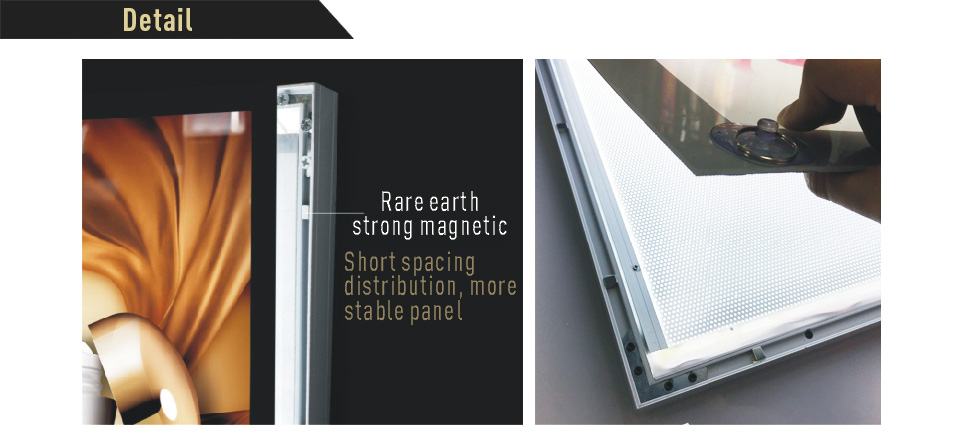Appliance companies develop rapidly
Since the reform and opening up, the living standards of the people of our country have rapidly increased. The various household appliances that were regarded as luxury in the past have gradually entered the homes of ordinary people. Relevant information shows that China has become the world's largest producer and consumer of household appliances; the refrigerator has 120 million social possessions, 170 million washing machines, 16 million computers, and 80 million air conditioners. It is no surprise that a family has two or three color TV refrigerators.
China's large-scale household appliances industry has formed an intensive production pattern. Color TV industry has formed 8 large-scale enterprises such as Sichuan Changhong, Shenzhen Konka, TCL, etc.; about 70 air-conditioner manufacturing enterprises, Zhuhai Gree Electric Appliance Co., Ltd., Guangdong Midea Group Co., Ltd., Haier Group, Chunlan Group, Shanghai Sharpe Electric Co., Ltd. 5 The total output of domestic enterprises accounted for more than half of the total output of the country; in the refrigerator industry, Kelon (Rongsheng), Haier, Xinfei, and Meiling maintained an absolute advantage. The total output of the four companies accounted for 61.6% of the country's total output; the washing machine industry Seven companies, including Little Swan, Haier, Rongshida, Weili, Jinsong, Jinling and Duckling, accounted for 71.4% of the country's total output, and they are leaders in the industry.
China's home appliance exports have steadily increased. Although affected by the international economic situation, the growth rate of exports will decline slightly, but in 2002 it remained at between 15% and 20%, and the annual export value exceeded 8 billion US dollars. China has developed into a major producer and exporter of home appliances in the world. On the one hand, in recent years, China has risen a number of "star enterprises" with an annual export value of over 150 million U.S. dollars, such as Haier, Xiamen Tsann Kuen, Midea, Galanz, Lejin Electronics, and Shanghai Sharp. On the other hand, exports of microwave ovens, rice cookers and other products have reached more than half of their output. At present, the output of air conditioners in China has already accounted for more than 60% of the market demand for small household indoor air conditioners in the world.
The electronics industry is China's pillar and leading industry. Electronic products have become China's major export-oriented products, and the packing boxes, trays, cushions, etc. required by these products are also very impressive figures. Therefore, how to improve product packaging design and improve the quality of packaging, especially how to replace EPS plastics and wooden pallets has become a top priority.
Large household appliances packaging
All kinds of large household appliances are similar in terms of packaging materials. Corrugated cartons are the most commonly used form of external packaging. Almost all large household appliances use paper packaging. Wooden packaging boxes have disappeared on the packaging of large household appliances. EPS is still playing a leading role in internal cushioning packaging. Foamed PE sheets are the most commonly used covering materials. In the structural design, there are certain differences in the carton structure for the volume and characteristics of different products. Refrigerators are relatively bulky household appliances. Since they cannot be tilted too much, the refrigerator packaging has already abandoned the previous integrated packaging and used two or three-piece structures, namely bottom trays, cylindrical boxes, and top lids. . This structure facilitates the removal of the refrigerator. The cardboard structure has both double corrugated cardboard and single corrugated cardboard, and there are no uniform requirements and standards of use. Because the load-bearing is mainly on the bottom of the box, the force of the box packaging is very small. Therefore, the split packaging structure can adopt different corrugated structure in different parts. The more reasonable structure is mostly used: the bottom tray adopts double corrugated structure. This will not only save material consumption, achieve the purpose of packaging weight reduction, but also ensure that the packaging plays its due protective role. Due to its relatively small size, TVs are still mainly based on integrated carton structures. More use of double corrugated cardboard. In addition, the appearance of television packages is the most varied in large appliances.
The packaging of large household appliances emphasizes the protection of the products; its decorative requirements are not high. This is mainly commensurate with the sale of goods for large household appliances; in both shopping malls and supermarkets, the products of large household appliances are sold by direct display without packaging. This is in contrast to candy, biscuits, and canned foods that rely on packaging to attract consumers' attention.
Large household appliances product packaging trends
The future development direction of the packaging structure of large household appliances will be based on split-structure design. Different corrugated cardboard will be used at different locations to achieve the best protection and economy. In terms of supply methods, most large-scale home appliance manufacturers have gradually changed the way they buy out-of-the-box containers. They have acquired or built professional cartons manufacturing companies, which can reduce costs and can be flexibly produced to meet the needs of enterprises. At present, the overall trend of packaging of large household appliances on timber is reducing weight and thinning, which is consistent with the global packaging development trend. Therefore, it is possible to achieve a reduction in the weight of packaging materials by benefiting from two aspects: first, the improvement of the quality of packaging paper; and second, the modernization of transportation methods. In particular, the latter plays a crucial role. In recent years, the logistics field in China has widely adopted palletization and containerized transportation. (To be continued)
Since the reform and opening up, the living standards of the people of our country have rapidly increased. The various household appliances that were regarded as luxury in the past have gradually entered the homes of ordinary people. Relevant information shows that China has become the world's largest producer and consumer of household appliances; the refrigerator has 120 million social possessions, 170 million washing machines, 16 million computers, and 80 million air conditioners. It is no surprise that a family has two or three color TV refrigerators.
China's large-scale household appliances industry has formed an intensive production pattern. Color TV industry has formed 8 large-scale enterprises such as Sichuan Changhong, Shenzhen Konka, TCL, etc.; about 70 air-conditioner manufacturing enterprises, Zhuhai Gree Electric Appliance Co., Ltd., Guangdong Midea Group Co., Ltd., Haier Group, Chunlan Group, Shanghai Sharpe Electric Co., Ltd. 5 The total output of domestic enterprises accounted for more than half of the total output of the country; in the refrigerator industry, Kelon (Rongsheng), Haier, Xinfei, and Meiling maintained an absolute advantage. The total output of the four companies accounted for 61.6% of the country's total output; the washing machine industry Seven companies, including Little Swan, Haier, Rongshida, Weili, Jinsong, Jinling and Duckling, accounted for 71.4% of the country's total output, and they are leaders in the industry.
China's home appliance exports have steadily increased. Although affected by the international economic situation, the growth rate of exports will decline slightly, but in 2002 it remained at between 15% and 20%, and the annual export value exceeded 8 billion US dollars. China has developed into a major producer and exporter of home appliances in the world. On the one hand, in recent years, China has risen a number of "star enterprises" with an annual export value of over 150 million U.S. dollars, such as Haier, Xiamen Tsann Kuen, Midea, Galanz, Lejin Electronics, and Shanghai Sharp. On the other hand, exports of microwave ovens, rice cookers and other products have reached more than half of their output. At present, the output of air conditioners in China has already accounted for more than 60% of the market demand for small household indoor air conditioners in the world.
The electronics industry is China's pillar and leading industry. Electronic products have become China's major export-oriented products, and the packing boxes, trays, cushions, etc. required by these products are also very impressive figures. Therefore, how to improve product packaging design and improve the quality of packaging, especially how to replace EPS plastics and wooden pallets has become a top priority.
Large household appliances packaging
All kinds of large household appliances are similar in terms of packaging materials. Corrugated cartons are the most commonly used form of external packaging. Almost all large household appliances use paper packaging. Wooden packaging boxes have disappeared on the packaging of large household appliances. EPS is still playing a leading role in internal cushioning packaging. Foamed PE sheets are the most commonly used covering materials. In the structural design, there are certain differences in the carton structure for the volume and characteristics of different products. Refrigerators are relatively bulky household appliances. Since they cannot be tilted too much, the refrigerator packaging has already abandoned the previous integrated packaging and used two or three-piece structures, namely bottom trays, cylindrical boxes, and top lids. . This structure facilitates the removal of the refrigerator. The cardboard structure has both double corrugated cardboard and single corrugated cardboard, and there are no uniform requirements and standards of use. Because the load-bearing is mainly on the bottom of the box, the force of the box packaging is very small. Therefore, the split packaging structure can adopt different corrugated structure in different parts. The more reasonable structure is mostly used: the bottom tray adopts double corrugated structure. This will not only save material consumption, achieve the purpose of packaging weight reduction, but also ensure that the packaging plays its due protective role. Due to its relatively small size, TVs are still mainly based on integrated carton structures. More use of double corrugated cardboard. In addition, the appearance of television packages is the most varied in large appliances.
The packaging of large household appliances emphasizes the protection of the products; its decorative requirements are not high. This is mainly commensurate with the sale of goods for large household appliances; in both shopping malls and supermarkets, the products of large household appliances are sold by direct display without packaging. This is in contrast to candy, biscuits, and canned foods that rely on packaging to attract consumers' attention.
Large household appliances product packaging trends
The future development direction of the packaging structure of large household appliances will be based on split-structure design. Different corrugated cardboard will be used at different locations to achieve the best protection and economy. In terms of supply methods, most large-scale home appliance manufacturers have gradually changed the way they buy out-of-the-box containers. They have acquired or built professional cartons manufacturing companies, which can reduce costs and can be flexibly produced to meet the needs of enterprises. At present, the overall trend of packaging of large household appliances on timber is reducing weight and thinning, which is consistent with the global packaging development trend. Therefore, it is possible to achieve a reduction in the weight of packaging materials by benefiting from two aspects: first, the improvement of the quality of packaging paper; and second, the modernization of transportation methods. In particular, the latter plays a crucial role. In recent years, the logistics field in China has widely adopted palletization and containerized transportation. (To be continued)
Magnet Light Box



FAQ
Q: Are you a trading company or factory?A: We are factory.
Q: What is the MOQ?
A: No MOQ required normally, that means you can always ask for a sample first. But remember the sample freight is at your own cost.
Q: Do I have to have a design to inquire?
A: Yes! A well made design/artwork is the most helpful thing to get an exact quote. However, if you really do not have a design...just let us know your idea, we'll cover it.
Magnet Light Box,Bus Stand Sign,Station Sign Led,Subway Station Sign Led
Chengdu GodShape Sign Co., Ltd , https://www.signsgs.com